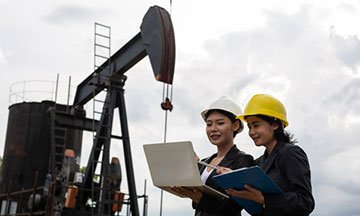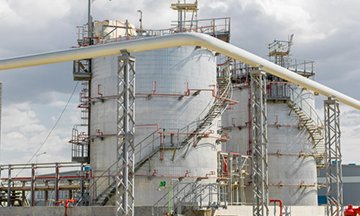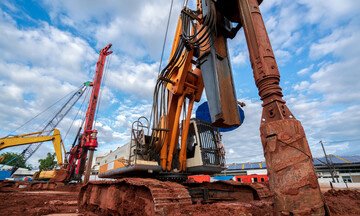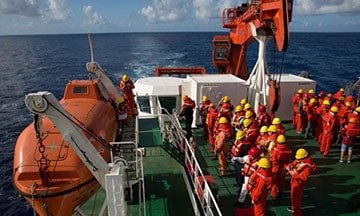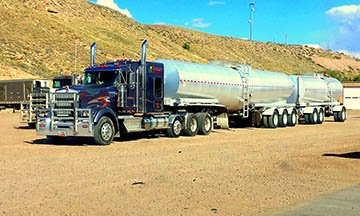SIMOPS (Simultaneous Operations) Procedure in Oil and Gas Safety, Hazards and Risk Assessment at Onshore and Offshore
| Date | Format | Duration | Fees | |
|---|---|---|---|---|
| 20 May - 24 May, 2024 | Live Online | 5 Days | $2250 | Register |
| 24 Jun - 28 Jun, 2024 | Live Online | 5 Days | $2250 | Register |
| 01 Jul - 05 Jul, 2024 | Live Online | 5 Days | $2250 | Register |
| 26 Aug - 03 Sep, 2024 | Live Online | 7 Days | $3147 | Register |
| 02 Sep - 06 Sep, 2024 | Live Online | 5 Days | $2250 | Register |
| 30 Sep - 04 Oct, 2024 | Live Online | 5 Days | $2250 | Register |
| 25 Nov - 29 Nov, 2024 | Live Online | 5 Days | $2250 | Register |
| 23 Dec - 27 Dec, 2024 | Live Online | 5 Days | $2250 | Register |
| Date | Venue | Duration | Fees | |
|---|---|---|---|---|
| 29 Apr - 03 May, 2024 | Dubai | 5 Days | $4750 | Register |
| 06 May - 10 May, 2024 | Dubai | 5 Days | $4750 | Register |
| 10 Jun - 14 Jun, 2024 | Athens | 5 Days | $5695 | Register |
| 24 Jun - 28 Jun, 2024 | Dubai | 5 Days | $4750 | Register |
| 08 Jul - 12 Jul, 2024 | Dubai | 5 Days | $4750 | Register |
| 22 Jul - 26 Jul, 2024 | Houston | 5 Days | $5695 | Register |
| 12 Aug - 23 Aug, 2024 | Dubai | 10 Days | $8775 | Register |
| 09 Sep - 13 Sep, 2024 | Dubai | 5 Days | $4750 | Register |
| 16 Sep - 20 Sep, 2024 | Budapest | 5 Days | $5695 | Register |
| 07 Oct - 11 Oct, 2024 | Dubai | 5 Days | $4750 | Register |
| 21 Oct - 25 Oct, 2024 | Lagos | 5 Days | $4950 | Register |
| 11 Nov - 15 Nov, 2024 | Paris | 5 Days | $5695 | Register |
| 18 Nov - 22 Nov, 2024 | Dubai | 5 Days | $4750 | Register |
| 02 Dec - 06 Dec, 2024 | Dubai | 5 Days | $4750 | Register |
| 09 Dec - 13 Dec, 2024 | New York | 5 Days | $5695 | Register |
Course Overview
What is SIMOPS Simultaneous Operation? SIMOPS (Simultaneous Operations) normally mean parallel construction activities in a live production plant. Typically, in oil & gas industry, production plants undergo expansion, debottlenecking, troubleshooting, revamp of obsolete equipment and piping and upgradation of technology etc which all require construction to add new equipment and piping and /or replace old equipment.
Since commercial and economic stakes are very high in the modern oil & gas installations whose stoppage is avoided, such construction activities are carried out over a period in parallel with the live production plant. The live plant is only shut down very briefly for a couple of days to hook up the newly constructed additions.
However, carrying out construction activities is fraught with several HSE hazards and risks. Major incidents in oil & gas industries could be collapsing of under-construction buildings/ scaffolding /other structures causing the producing plants to catch fire, explode and have toxic/lethal releases etc. Depending upon size and duration of SIMOPS, the oil & gas installations must pay due attention to SIMOPS hazards and do everything possible to prevent, minimize and contain the associated risks.
SIMOPS activities require meticulous planning and coordination between those operating the running Plant and those constructing the new part of the Plant.
This Zoe training course will empower course participants with comprehensive knowledge and skills in managing SIMOPS.
Course Objectives
This important and comprehensive ‘SIMOPS Procedure in Oil and Gas Safety, Hazards and Risk Assessment at Onshore and Offshore’ course will equip the participants to:
- Understand SIMOPS fundamentals with respect to onshore and offshore
- Appreciate planning and coordination between operating and construction parties
- Understand the mechanisms of interface meetings and agreements
- Comprehend Hazards and Risks of SIMOPS
- Understand the importance of Permit to Work System to manage SIMOPS risks
- Learn to plan and implement the controls to manage SIMOPS risks
- Emphasize physical boundary demarcation between live and construction areas
- Underline the importance of training and communication to workforce
- Plan and execute Emergency Response during SIMOPS
- Discuss risk management during the hook up between the live and constructed areas
- Appreciate the difference between the onshore and offshore scenarios with respect to the above aspects
- Participate and contribute to solving the SIMOPS problem-scenarios in a class-room setup
Training Methodology
This collaborative ‘SIMOPS Procedure in Oil and Gas Safety, Hazards and Risk Assessment at Onshore and Offshore’ training program will comprise the following training methods:
- Lectures (Tutor-assisted online and classroom as per requirements)
- Seminars & Presentations
- Group Discussions
- Assignments
- Case Studies & Functional Exercises
Zoe Talent Solutions follows the ‘Do-Review-Learn-Apply’ model.
Organisational Benefits
Companies who nominate their employees to participate in this ‘SIMOPS Procedure in Oil and Gas Safety, Hazards and Risk Assessment at Onshore and Offshore’ course can benefit in the following ways:
- Minimize adverse impact on business continuity by preventing the major incidents from the SIMOPS incidents
- Reduce greatly the costs associated with SIMOPS incidents such as insurance premiums, compensation to employees, legal fees and regulatory/statutory penalties
- Successful SIMOPS project save companies huge money which otherwise could have been lost, had the plant been stopped to allow safer construction in the neighbourhood
- The culture of SIMOPS Risk Management leaves a positive impact on customers, lenders, insurance underwriters, management system certification agencies, regulatory & statutory authorities, industry and societal spectrum at large
Personal Benefits
Individuals who participate in this ‘SIMOPS Procedure in Oil and Gas Safety, Hazards and Risk Assessment at Onshore and Offshore’ course can gain from it in the following ways:
- Development of confidence by practicing techniques and procedures involving ‘SIMOPS Risk Management at Onshore and Offshore’, and thus proving to be successful professionals irrespective of their trade
- SIMOPS project experience is considered very valuable for professionals in modern high-stake oil and gas production facilities which are planned for expansion, debottlenecking, troubleshooting, revamp of obsolete equipment etc
- Since HSE excellence is seen as an imperative attribute for all professionals of all trades (not only HSE department), this course will help develop a very important characteristic in their professional journey which will ultimately benefit whichever company they would work for
- An individual develops a safe attitude towards his professional, personal, family and social life with knowledge gained in this training course, because SIMOPS activities may be going on in any area, not necessarily in a workplace
Who Should Attend?
This ‘SIMOPS Procedure in Oil and Gas Safety, Hazards and Risk Assessment at Onshore and Offshore’ course would be suitable for:
- HSE Professionals at all levels (trainees, interns, technicians, officers, managers and others)
- All line functions at all different levels (trainees, interns, officers, managers, senior managers in operation, maintenance, inspection, engineering, other line disciplines)
- Middle and Senior Management (a smaller customized part of this course)
- Non-line functions such as office managers
Course Outline
MODULE 1: SIMOPS FUNDAMENTAL CONCEPTS
- Brownfield work vs the Greenfield
- Common Incidents, Accidents and Near Misses in SIMOPS
- SIMOPS HSE professionals
- How small incidents turn into major incidents during SIMOPS?
- Some major SIMOPS incidents in the industry
- Specifics of onshore SIMOPS
- Specifics of offshore SIMOPS
- Other miscellaneous common refreshing discussions and Q&A to kick off
MODULE 2: PLANNING & COORDINATION BETWEEN THE OPERATING AND CONSTRUCTION PARTIES
- Regular interface meetings between the operating and construction parties
- Interface agreements on SIMOPS activities
- Documentation of identified high risk SIMOPS activities
- Cascading the identified SIMOPS risks to the workforce to comprehend the seriousness
- SIMOPS Training to workforce
MODULE 3: PHYSICAL FENCING BETWEEN THE LIVE AND CONSTRUCTION AREAS
- Fencing with wired nets between the live and construction areas to ensure separation with visibility
- Shifting/relocation of the fencing as the construction progresses
- Installation of Fire and Gas detectors on the fence to alert on the gas leak from live plant
- Difficulties associated with fencing
- Installation of windsocks on the fence
- The Right and correct time to remove the fence
MODULE 4: PERMIT TO WORK (PTW) SYSTEM FOR SIMOPS RISKS
- What jobs need Permit to Work System?
- Special authorization of Permits for SIMOPS jobs
- Display of Permits at prominent locations
- What actions to take on PTW System during emergency?
- Archiving of Permits
MODULE 5: LIFTING CRANES TOPPLING AND HITTING LIVE EQUIPMENT OF THE LIVE PLANT
- Cranes losing stability while installing new equipment and falling on live equipment
- Cranes hitting overhead power cables
- Proper planning of heavy lift
- Pre-use inspection and proof load test of cranes
- Land testing against any possible capsizing
- Supervision during heavy lifts
MODULE 6: LIVE PLANT EQUIPMENT CAPSIZING DUE TO CONSTRUCTION ACTIVITIES
- Construction excavations weakening the foundation of live equipment
- Underground construction seepages weakening the foundation of live equipment
- Live equipment capsizing due to fire and explosion from construction site
- Poor civil engineering assessments regarding the land piling
MODULE 7: FIRE AND EXPLOSION
- Construction areas activities such as grinding, gas cutting and welding igniting the gas leaking from the live plant, causing fire
- Construction areas activities such as grinding, gas cutting and welding igniting the flammable materials used in construction areas such as paint, thinners, and other combustible materials
- The fire developed as above heating the live plant vessels and tanks storing the flammable hydrocarbons and causing them to explode due to BLEVE (Boiling Liquid Expanding Vapour Explosion)
MODULE 8: TOXIC RELEASE
- Toxic releases from live plants due to natural plant aging, and poor inspection and maintenance regime, resulting in dangerous exposure to the operating and construction workers alike
- Detection of toxic releases by fixed and portable gas detectors and auto-annunciation of alarms
- Availability of special PPE to protect the workers from toxic exposure
MODULE 9: RADIATION HAZARDS
- Fabrication activities followed by radiography to check mechanical integrity of welds
- Long-term health hazards of radiation used in the radiography inspection of welds
- Radiation control at the construction site during SIMOPS
MODULE 10: EMERGENCY RESPONSE
- Training on emergency response to the operating and construction workers
- Use of special PPE during emergency such as respiratory protection
- Familiarization with windsocks direction, location and operation of muster points, emergency communication and evacuation procedures
- Availability of Fire and rescue team
- Emergency drills
MODULE 11: SPECIFICS OF OFFSHORE SIMOPS RISKS
- Collision of the production platform by the construction lift barges
- Construction workers overcrowding on the offshore platforms, resulting in difficulties on the compact platforms during emergency evacuation
- Fire and explosion risks much severe and their probability much higher compared to onshore
- Instability of lift barges carrying heavy equipment, resulting in new equipment under erection falling on the live production units
MODULE 12: THE HOOK UP BETWEEN THE CONSTRUCTED PLANT AND THE LIVE PLANT
- Live Plant to shut down when hooking up
- Leak detection tests using air and nitrogen before charging the newly constructed areas with gas
- Gas into the newly constructed to be declared as a high-risk activity, with possibilities of many leakages and associated toxic releases including fire and explosion



